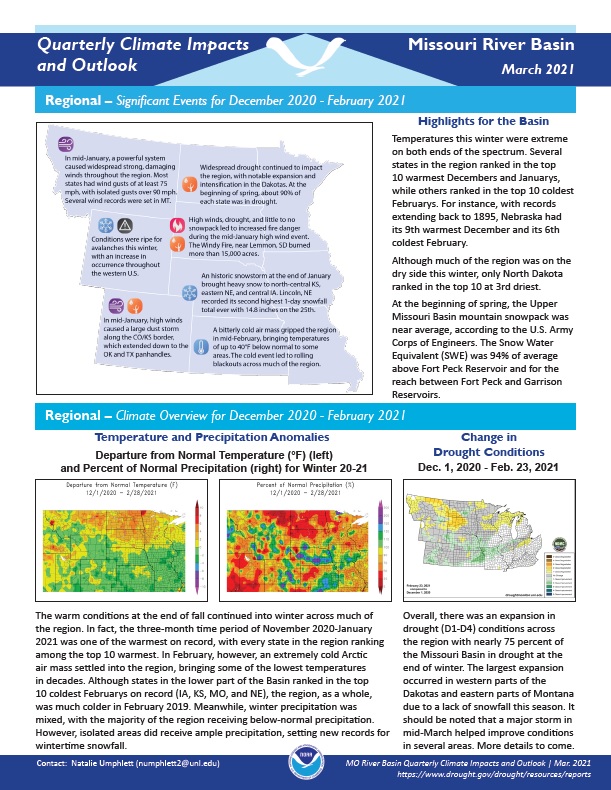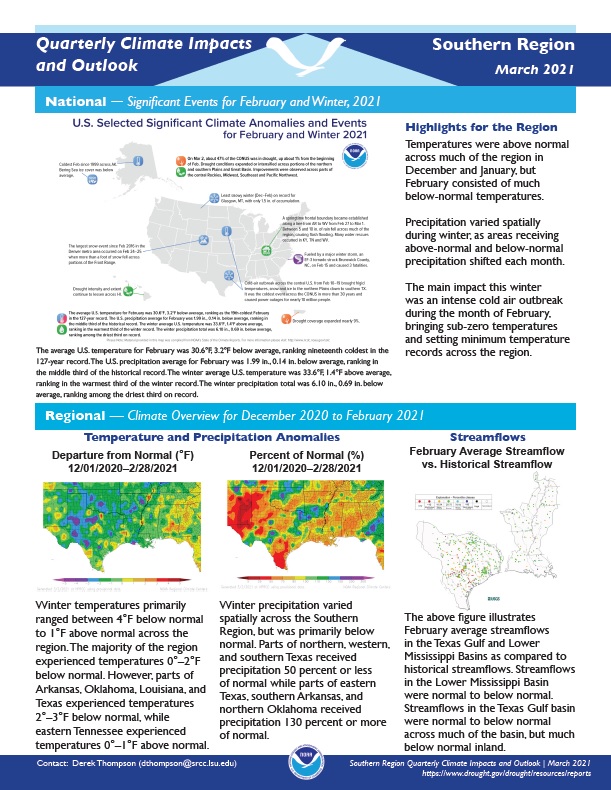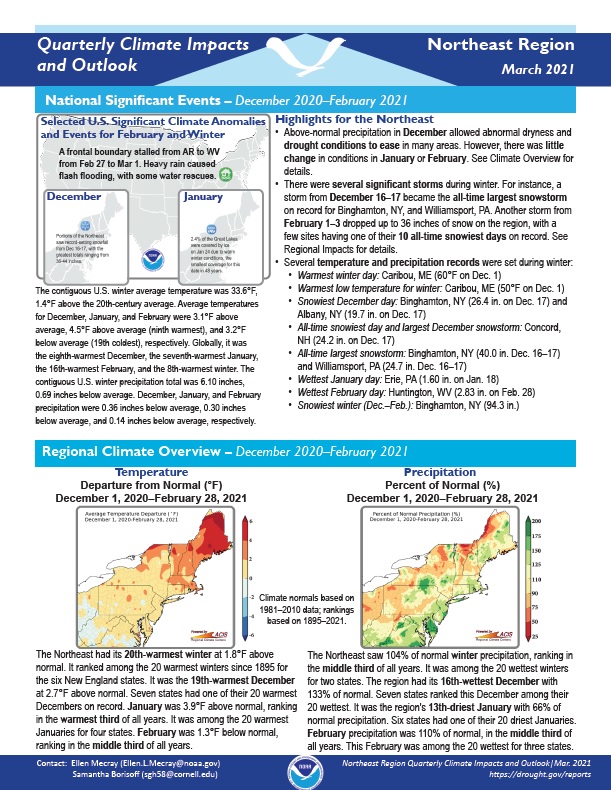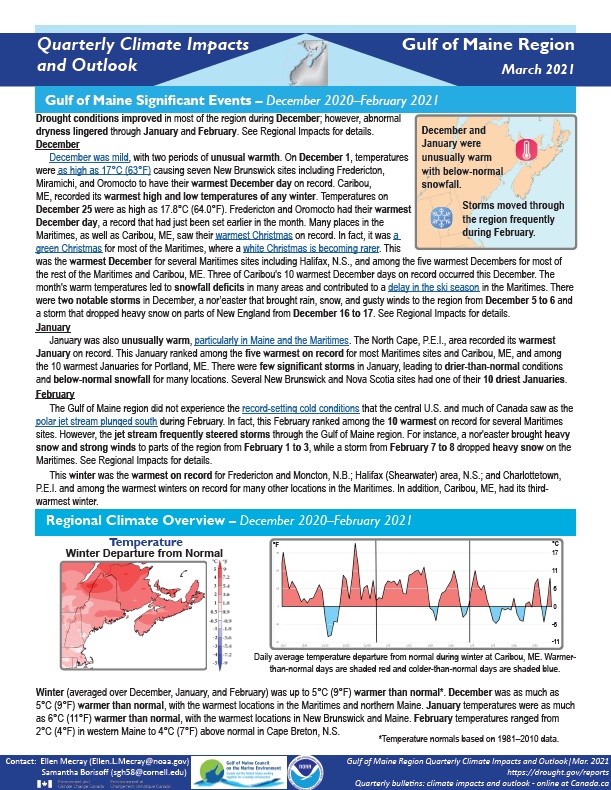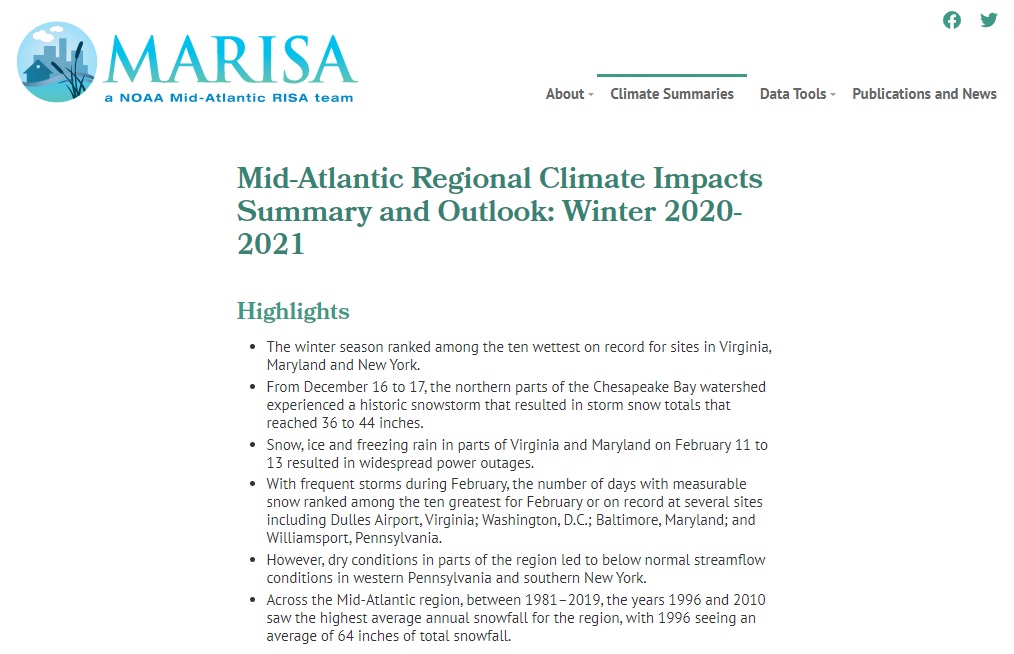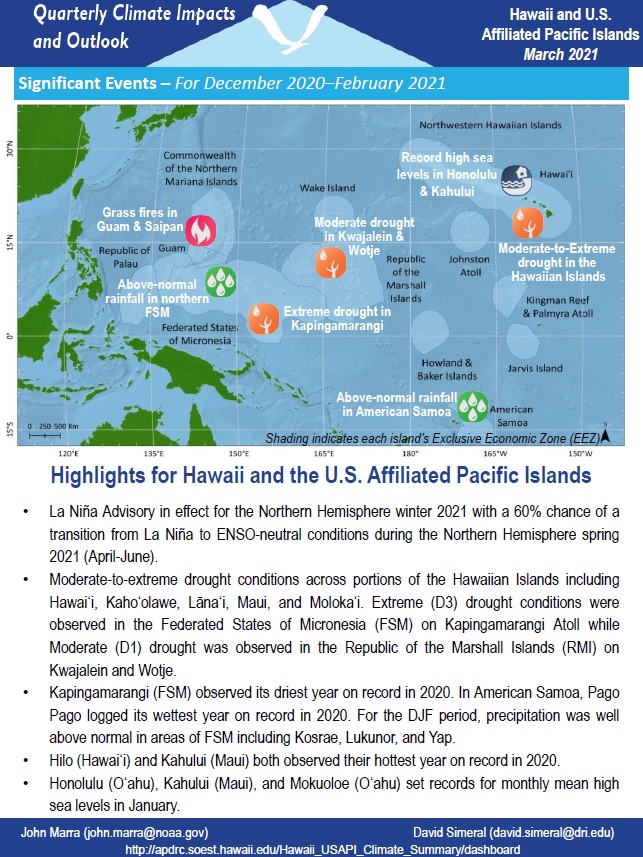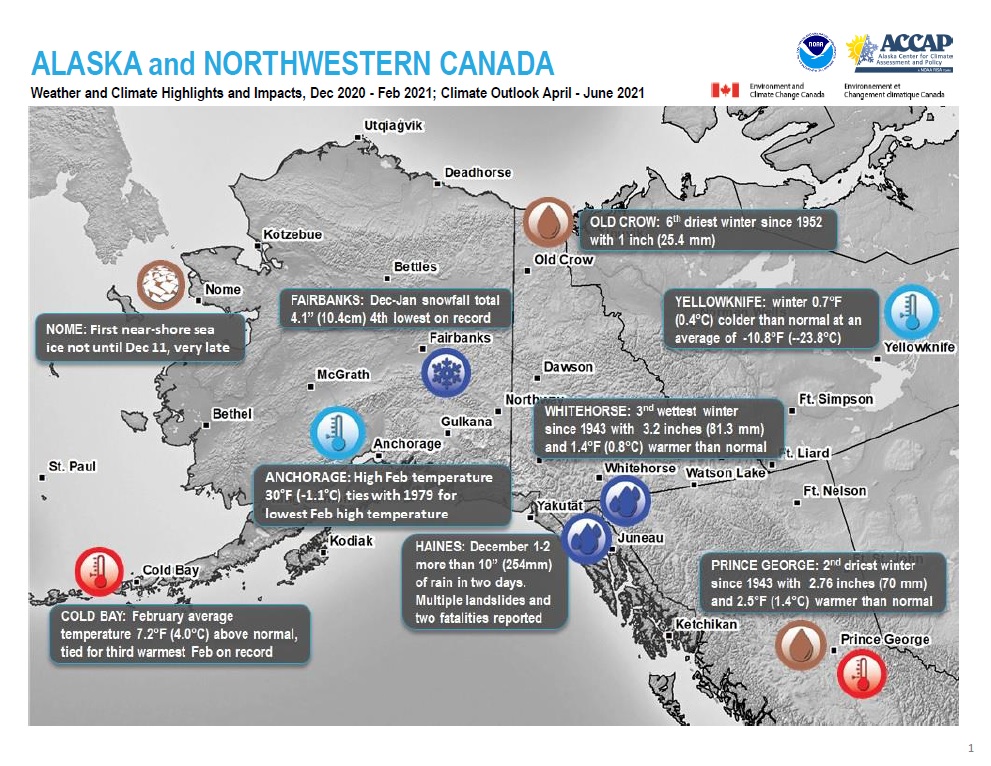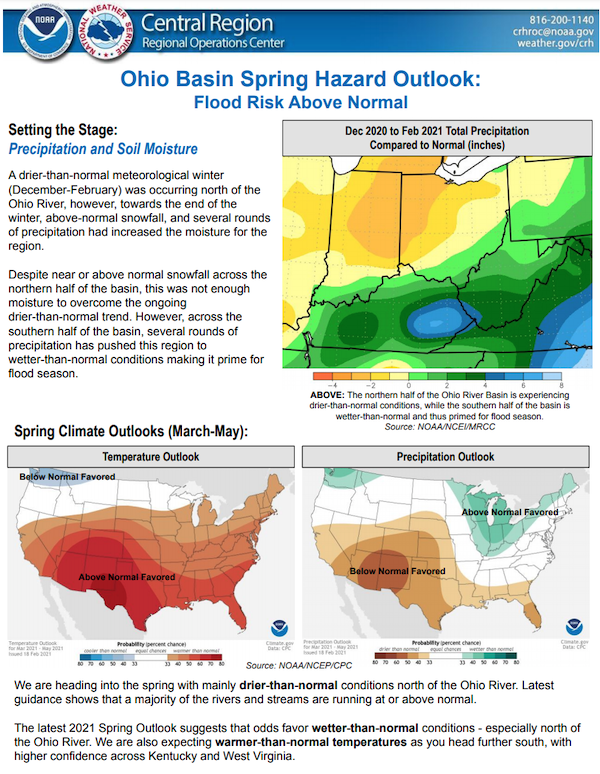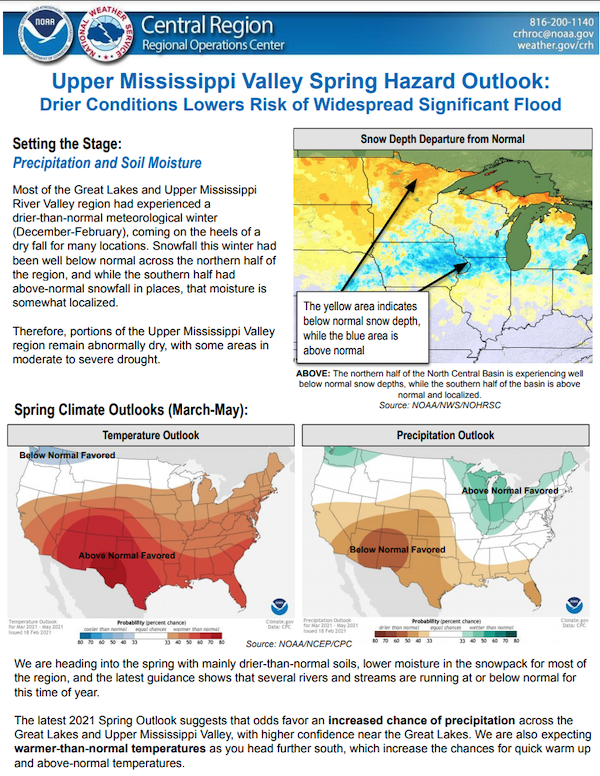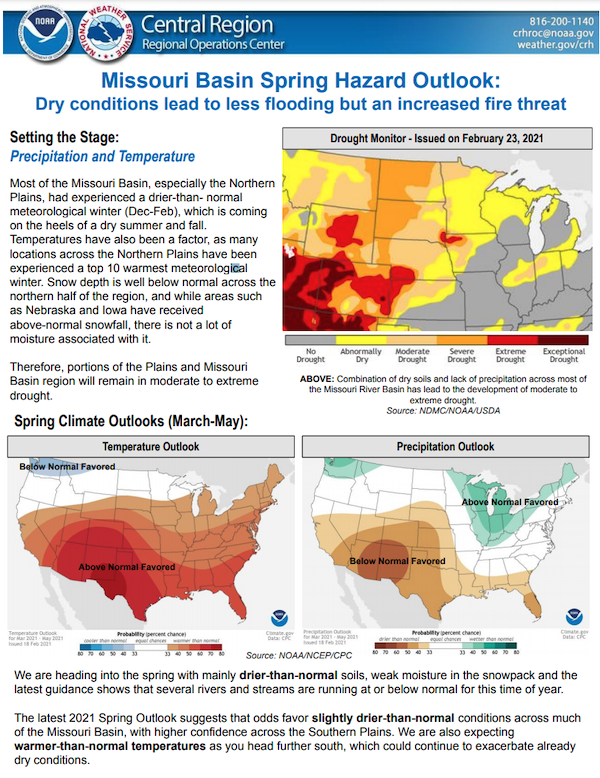Quarterly Climate Impacts and Outlook for the Missouri River Basin December 2020 – February 2021. Dated March 2021.
Temperatures this winter were extreme on both ends of the spectrum. Several states in the region ranked in the top 10 warmest Decembers and Januarys, while others ranked in the top 10 coldest Februarys. Although much of the region was on the dry side this winter, only North Dakota ranked in the top 10 at 3rd driest.
Quarterly Climate Impacts and Outlook for the Southern Region for December 2020 – February 2021. Dated March 2021.
Winter temperatures primarily ranged between 4°F below normal to 1°F above normal across the region. Winter precipitation varied spatially across the Southern Region, but was primarily below normal.
Quarterly Climate Impacts and Outlook for the Northeast Region for December 2020 – February 2021. Dated March 2021.
The Northeast had its 20th-warmest winter at 1.8°F above normal and saw 104% of normal winter precipitation, ranking in the middle third of all years.
Quarterly Climate Impacts and Outlook for the Gulf of Maine Region for December 2020 – February 2021. Dated March 2021.
Winter was up to 5°C (9°F) warmer than normal. Winter precipitation ranged from 50% of normal to 150% of normal. Sea surface temperatures over the entire Gulf of Maine were strongly above normal for the winter season.
Quarterly Climate Impacts and Outlook for the Chesapeake Bay Region for December 2020 – February 2021. Dated March 2021.
Quarterly Climate Impacts and Outlook for Hawaii and the U.S. Pacific Islands Region for December 2020 – February 2021. Dated March 2021.
Across the central and eastern equatorial Pacific Ocean, sea-surface temperatures (SSTs) were below normal with La Niña conditions present and a La Niña Advisory still in effect as of the end of February.
Quarterly Climate Impacts and Outlook for Alaska and Northwestern Canada for December 2020 - February 2021; outlook for April - June 2021. Dated March 2021.
Winter started at the beginning of November with the early arrival of a record setting 40cm snowfall. Conditions remained snowy resulting in 66cm depth of snow on the ground at the airport at the end of February. Northwest Canada & Alaska was mostly drier than normal.
The National Weather Service developed 2021 Spring Hazard Outlooks in coordination with the National Centers for Environmental Information, National Integrated Drought Information System (NIDIS), U.S. Department of Agriculture, National Weather Service River Forecast Centers, and National Interagency Fire Centers' Geographic Area Coordination Centers. This outlook highlights the various Spring hazards that could occur and potential impacts across the Ohio River Valley.
The National Weather Service developed 2021 Spring Hazard Outlooks in coordination with the National Centers for Environmental Information, National Integrated Drought Information System (NIDIS), U.S. Department of Agriculture, National Weather Service River Forecast Centers, and National Interagency Fire Centers' Geographic Area Coordination Centers. This outlook highlights the various Spring hazards that could occur and potential impacts across the Upper Mississippi Valley and Great Lakes.
The National Weather Service developed 2021 Spring Hazard Outlooks in coordination with the National Centers for Environmental Information, National Integrated Drought Information System (NIDIS), U.S. Department of Agriculture, National Weather Service River Forecast Centers, and National Interagency Fire Centers' Geographic Area Coordination Centers. This outlook highlights the various Spring hazards that could occur and potential impacts across the Missouri River Basin.


